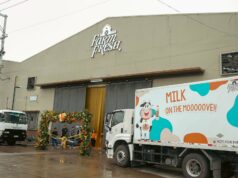ANGELES CITY – An export of the Bureau of Fisheries and Aquatic Resources (BFAR) said on Monday that the toxicity of red tide in Bataan has become so deadly that anyone to ingests shellfish harvested from affected areas could feel symptoms of poisoning in 20 minutes.
BFAR regional red tide technician Perdita Guella told Punto that latest test on shellfish samples gathered off the cost of Bataan revealed 469 micrograms per 100 grams of shellfish meat.
This, she noted, is significantly higher than the tolerable limit of 60 micrograms per 100 grams of shellfish meat.
Gathering and eating of shellfish gathered off the coast of Balanga City, Samal, Orion, Orani, Abucay, Hermosa and Mariveles in Bataan, as well as the waters off Masinloc, Zambales, has remained banned since November last year, she noted.
“Anyone who ingests shellfish meat with such level of toxicity will feel the symptoms of poisoning within 20 minutes,” Guella said. The initial symptoms include numbness in the lip area, dizziness and vomiting.
She said the victim should be rushed immediately to the hospital.
In the meantime, the victim could be made to drink “kakang gata” or the juice from the first extraction from coconut meat to induce vomiting.
Guella said that latest tests indicated that shellfish meat from the Masinloc Bay in Zambales indicated much less toxicity at 69 micrograms per 100 grams, but even this would be poisonous.
“There is no saying how long the red tide plague will be there, but the situation could last and there have been instances in the past when red tide persisted for years. In the case of Masinloc, red tide has always been an off-and-on situation,” she noted.
Guella said that scores of shellfish gatherers in the affected sites were given alternative livelihood assistance, including fishing nets to help them shift their activities to fishing.
She said BFAR conducts weekly tests of samples of shellfish meat from the affected areas.
BFAR said the red tide is usually associated with rising ocean temperatures but has also been noted even in cooler weather.
Pacific Coast of the United States, red tide cases have been increasing since about 1991 and scientists found correlation between the increase of Pacific red tides and other harmful algae blooms with a rise in ocean temperature of approximately one degree Celsius as well as increased nutrients in coastal waters from sewage and fertilizers, the BFAR noted.
BFAR also cited studies indicating that some red tides and harmful algae blooms along the Pacific coast also have been associated with the warm El Niño phenomenon without any link to pollution.
BFAR Central Luzon information officer Lanie Lamyong said, however, that fishes, squids, shrimps and crabs harvested from the affected areas are safe to eat “for as long as they are fresh and washed thoroughly and their internal organs such as gills and intestines are removed before cooking.”
BFAR said there is no single cause of red tides and other harmful algae blooms in bodies of water but there is general belief that apart from hot weather, coastal pollution from human sewage, agricultural runoff and other sources contribute to red tides.




